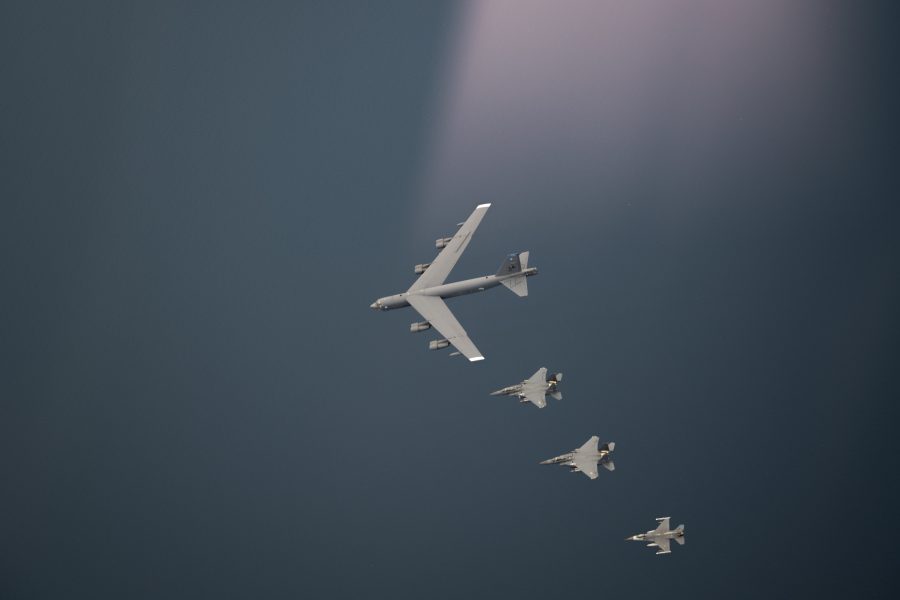Two B-52 bombers flew with fighter aircraft from the U.S., South Korea, and Japan southwest of Kyushu Island near the East China Sea on April 2, marking the first trilateral aerial exercise between the nations this year and just the third one ever.
The exercise also came just a few hours after North Korea tested an intermediate-range ballistic missile with a hypersonic glide vehicle. Pyongyang’s state-controlled media claimed a successful launch of the weapon, with the missile flying approximately 403 miles and reached a maximum altitude of 62 miles before landing in waters near Japan’s exclusive economic zone.
The B-52 Stratofortresses that participated in the trilateral drill came from the 2nd Bomb Wing at Barksdale Air Force Base, La., flying from their deployed location on Diego Garcia in the Indian Ocean.
Three USAF F-16s, four Japan Air Self-Defense Force F-2s, and two Republic of Korea Air Force F-15K Slam Eagles flew across the airspace southwest of Korea’s Jeju Island. The region is where the Air Defense Identification Zones of South Korea and Japan intersect and is also close to Taiwan.
“The enhanced complexity and fluidity of our collective forces demonstrate the strength of the partnership and cooperation between the three countries, keeping with commitments made to regularize defensive exercise and increase readiness.” Air Force Global Strike Command said in a statement.
Each of the two U.S.-Japan-South Korea aerial exercises last year also featured fighters from all three countries escorting U.S. bombers: one with B-52s and one with B-1s. Leaders from the three nations pledged during a summit last year to hold more trilateral exercises.
Later in the day, one B-52 diverted from its route and made a landing at Yokota Air Base in Tokyo, Stars and Stripes reported, marking the bomber’s second such unexpected landing in Japan in nine months. Pacific Air Forces did not immediately respond to a query from Air & Space Forces Magazine for the cause of the diversion or further details.
The North Korean missile test marks the latest provocation by leader Kim Jong-un, who has ramped up launches in recent months. When launched at a normal angle, intermediate-range ballistic missile like the one tested can reach up to 3,100 miles, making the weapon capable of targeting any U.S. military base in Japan and Guam, according to the Republic of Korea Defense Ministry.
Meanwhile, President Joe Biden is set to welcome Japanese Prime Minister Kishida Fumio at the White House on April 8. They are expected to discuss efforts counterbalance China’s influence in the region and concerns regarding Pyongyang’s continued missile and nuclear development.
